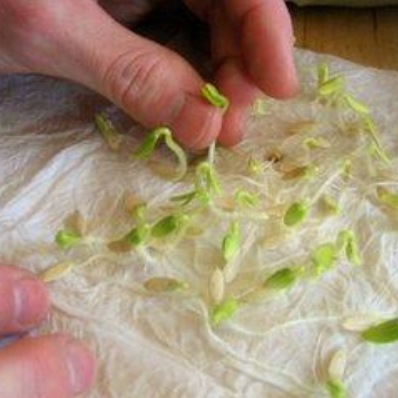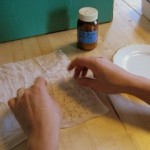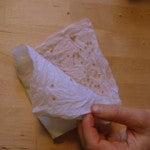
New Year's Resolutions: Out with the old, in with the new?
Are you making any garden related New Year's resolutions?
One of my annual New Year's resolutions is to learn to be more self-sufficient and reduce my planetary impact. One way we do this in the garden is by saving seeds from the plants we grow. But saving leftover seeds that were not planted is a green practice as well. So, before you start making your list of new seeds to buy, pull out your box or bag or jar or pile of old seeds and take stock.
 last season's seeds.
last season's seeds.Some gardeners start fresh every year, throwing out any seeds they did not plant the previous spring. The impulse is understandable, no gardener wants to waste precious space by planting seeds that will not grow. But I'll let you in on a little seed-trade secret, many of the seeds you order were saved and stored from previous years, and you can do the same thing at home. The trick is knowing if the seeds are still viable. So how can you tell before you plant them?
Each year, we do germination tests on our saved seeds and old seeds to determine which still have high germination rates. Here's an easy DIY version for checking germination rates of your old seeds that will help you save money and other resources- two great New Years resolutions in one simple act that's good for your garden!
Materials:
- Strong paper towels
- Water
- Zip locks (reused ones are fine!)
 Counting out the seeds.
Counting out the seeds. - Light bulb
- Plastic or glass bin (optional)
Instructions:
Wet the paper towel and gently ring out. Flatten the paper towel and place 10, 50, or 100 seeds in one quadrant. If we have lots of seeds we count out 100, for smaller batches 10 is ok. Fold the paper towel in quarters so that the seeds are sandwiched in the middle. Press flat. The goal it to have complete moisture
 Folding up the paper towel.
Folding up the paper towel.contact around each seed. Place the paper towel in the ziplock bag and seal. Label the bag with the name of the variety, date, number of days to germination, and the seed count. If you have a very warm spot that is consistently around 72 degrees, you can place your tests there. If not, a small light bulb in a hardware store metal bell shaped fixture will work. Just hang it so that it is close enough to throw off some heat but not so close that it will melt or burn the bag. If you are doing multiple germination tests at the same time, you can rig up the light bulb in a plastic bin with a lid. Consider it your very own home germination chamber (and fire hazard).
Check each bag when the seeds should be germinating. Look for small sprout tips. We check for a few days and keep count as some seeds will germinate earlier and some later. Germination rates are always listed as percentages. If you put 10 or 100 seeds, it's easy to calculate your germination rate for the batch. If 8 out of 10 seeds germinated, you have an 80% germination rate. Record your germination rates with the seeds.
 Checking germination.
Checking germination.Compost the seeds that have less than 50% germination rate. Chances are even the ones that can muster germinating will not be that vigorous. For the seeds that you can count on, make sure to store them in airtight, dry, and dark conditions until spring.






